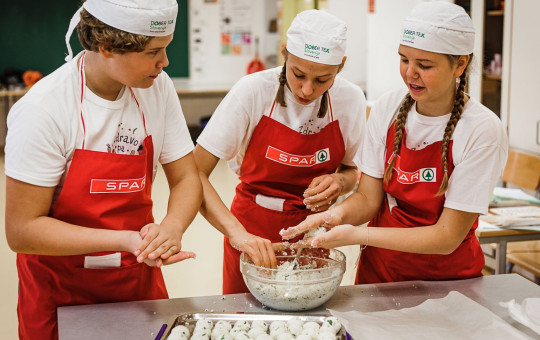Date: 14. November 2024
Time to read: 3 min
In addition to being the original home area of the Carniolan honey bee, Slovenia can also pride itself on having Slovenski med– or Slovenian honey – with protected geographical indication, which guarantees customers the purchase of natural, genuine honey produced in Slovenia.
Such honey must meet all the criteria laid down by the applicable national and European legislation and the Rules on the Use of the System of Slovenski med with protected Geographical Indication. The holder and owner of the Slovenski med protected geographical indication is the Slovenian Beekeepers’ Association, which, with their internal controls, take organised care of the quality and safety of the honey produced.
-
 A degustation of Slovenian honey. Photo: Jošt Gantar/www.slovenia.info
A degustation of Slovenian honey. Photo: Jošt Gantar/www.slovenia.info
-
 In Slovenia, there are three protected geographical indications for honey recognised at the European level: Slovenski med with protected geographical indication, Kočevski med with protected designation of origin and Kraški med with protected designation of origin. Photo: Tamino Petelinšek/STA
In Slovenia, there are three protected geographical indications for honey recognised at the European level: Slovenski med with protected geographical indication, Kočevski med with protected designation of origin and Kraški med with protected designation of origin. Photo: Tamino Petelinšek/STA
With a taste of Slovenia
Slovenski med with protected geographical indication contains the pollen of plants growing in Slovenia, and thus may include the pollen of alien species growing in parks, agricultural plantations and botanical gardens in the country.
The production, extraction, storage and decanting of the honey is also carried out in Slovenia. In addition to the beekeeper's name, there is also the exact origin of the honey indicated on the packaging of Slovenian honey.
Slovenski med of premium quality can be bought from beekeepers who are included in quality schemes.
The most common types of Slovenski med include acacia honey, spruce honey, forest honey, silver fir honey, chestnut honey, floral honey and linden honey.
Acacia honey is liquid, almost colourless or slightly yellow, mild in taste and lacking a distinct smell, which is why some people call it ladies’ honey. It is regarded as an excellent spread for bread and an indispensable sweetener for tea, coffee and fruit cakes. This type of honey has a sedative quality and helps in treating insomnia, menopause problems and children not wanting to eat.
Spruce honey, in its liquid state, is reddish brown and fairly dense. It has a resiny taste and is very rich in minerals. It goes well with dairy dishes and spreads and with various sauces. It has similar characteristics to silver fir honey.
Forest honey comes in different shades of brown, as it is a natural blend of the types of honey obtainable from the forest. It is especially delicious on brown bread and in cottage cheese dishes,and is essential in manysauces and toppings. Since it is rich in minerals, especially iron, it is recommended for anaemia and for boosting the body’s immune system.
Silver fir honey is of a darker green-brown hue, is fairly dense and does not crystallise easily. This type of honey is almost odourless and has a very pleasant, mild taste. It goes perfectly with brown bread, milk drinks and dried fruits. It is rich in minerals and terpenes, which help to soften mucus in respiratory diseases. Consumers rate it highly, as it is consideredan excellent remedy for coughs and bronchitis.
Chestnut honey has a darker amber colour and a smell reminiscent of wormwood and is to a greater or lesser extent bitter. This bitterness stems from the pollen grains to be found in a large quantity in this type of honey. The vitamin content of chestnut honey is therefore higher than that of other types of honey. It is very often usedin baking pastries. It has a beneficial effect on digestive and metabolic disorders,and also a sedative value.
Floral honey is gathered by beesfrom meadow flowers and other blooming plants. The colour of floral honey varies from light yellow shades to yellowish-brown. It crystallises sooner or later depending on the type of plant it is derived from, while the crystals are of different sizes for the same reason. Floral honey is delicious on bread or in pastries and is suitable for the preparation of light meat dishes and various beverages. It strengthens the heart and blood vessels.
Linden honey,in its liquid state, is yellow with a greenish opal reflection. It has a pleasing scent of linden blossom. Its aroma is intense, very characteristic of menthol, linden blossom, herbs or fresh nuts. The crystallisation is usually slow and uneven, the crystals being relatively large. Linden honey is an excellent spread for bread, a widely enjoyed tea sweetener and is also used in baking pastries.
Less common are cicada, dandelion, maple, cherry, buckwheat, sage and rapeseed honeys.
So the next time you’re buying honey, look for Slovenski med on the label!
Its full taste, energy value and beautiful colour will also give you a feeling of what Slovenia is like.








